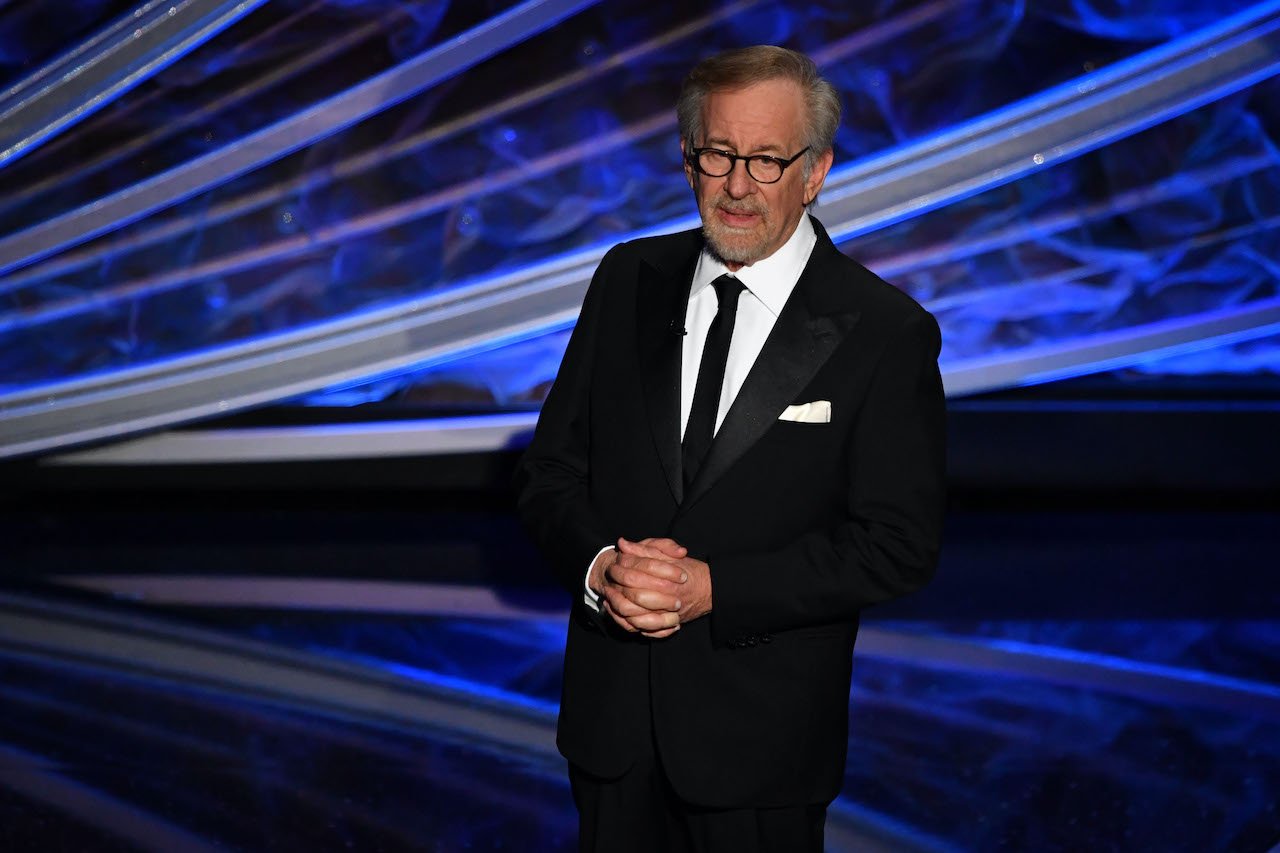‘E.T. the Extra-Terrestrial’: Steven Spielberg Had To Eat ‘Squishy and Crunchy’ Vegetables For a Whole Day in Order To Perfect E.T.’s Chewing Sounds
Steven Spielberg’s blockbuster hit E.T. the Extra-Terrestrial was extremely successful, becoming the highest-grossing film of all time upon its release. The popular flick earned four Academy Awards, winning two for its sound and sound editing.
Spielberg had to rely on a combination of clever tricks and cutting-edge technology in order to develop the sounds heard throughout the film, particularly E.T.’s. In fact, he had to record himself chewing on various vegetables in order to create the iconic sounds of E.T. eating fruit in one particular scene.
Steven Spielberg had to craft E.T.’s eating sounds by chewing on vegetables all day

Spielberg has a ton of great memories from working on the set of E.T., but he holds a few in the highest regard. One, in particular, is how he managed to record the sounds of E.T. eating, according to a resurfaced 2018 interview with BBC Radio 1.
“I think one of the fondest memories I have is doing all of the E.T. chewing, the chewing sounds when E.T. is just, you know, he’s got a little plate of fruit in front of him in Elliot’s room, and he’s chewing the food,” Spielberg said. “I spent a day eating all kinds of interesting-sounding, both soft, squishy, and hard crunchy vegetables. I hated that day, but I’ll never forget that day.”
As you can imagine, Spielberg eventually got sick of eating all of the vegetables. Luckily he had someplace to dump them.
“I had a spit cup, a spit bucket as well,” Spielberg added.
Editor Carol Littleton also recalled fond memories of the experience during a separate 2012 interview with the Oscars.
“When they were shooting E.T. down at the set it was just amazing because it was a den—you can’t imagine the den of sound there,” Littleton said.
The ‘E.T.’ film crew had to humanize the animatronic alien
Aside from recording human audio, Spielberg had a few other tricks for making E.T. seem real. He had a team of puppeteers controlling the alien’s movements as he directed them.
“There were nine puppeteers off camera looking at their monitor, they were listening to Stephen direct them,” Littleton said. “They could see E.T., all the facial movements had to be in sync with each other. Just think about it. Blinking an eye—when you think about blinking your eye when you move your head, everything had to seem—I hate to use the word human, but we had to humanize him.”
Spielberg even hired a mime artist to perfect E.T.’s motions.
“So the puppeteers were doing a beautiful job,” Littleton said. “All the handwork … Stephen realized very early on that the handwork needed to be more realistic so he used a mime artist for the hands.”
There were several different versions of E.T. used on set
Because E.T. had to perform a number of different motions and actions, Spielberg had several different puppets that all served a unique function.
“So he had different versions of E.T.,” Littleton said. “There were the people in the suits. Pat Bowlen, who was the main E.T. actor, who was actually inside one of the rubber suits from time to time. And then there were, I’m not sure how many puppets they had to work with … on the set.”


